Sie müssen eingeloggt sein
-
zurückX
-
Komponenten
-
-
Category
-
Halbleiter
- Dioden
- Thyristoren
-
Elektroisolierte Module
- Elektroisolierte Module | VISHAY (IR)
- Elektroisolierte Module | INFINEON (EUPEC)
- Elektroisolierte Module | Semikron
- Elektroisolierte Module | POWEREX
- Elektroisolierte Module IXYS
- Elektroisolierte Module | POSEICO
- Elektroisolierte Module ABB
- Elektroisolierte Module | TECHSEM
- Gehen Sie zur Unterkategorie
- Brückengleichrichter
-
Transistoren
- Transistoren | GeneSiC
- SiC-MOSFET-Module | Mitsubishi
- SiC-MOSFET-Module | STARPOWER
- ABB SiC-MOSFET-Module
- IGBT-Module | MITSUBISHI
- Transistormodule | MITSUBISHI
- MOSFET-Module von MITSUBISHI
- Transistormodule | ABB
- IGBT-Module | POWEREX
- IGBT-Module | INFINEON (EUPEC)
- Halbleiterkomponente aus Siziliumkarbid
- Gehen Sie zur Unterkategorie
- Treiber
- Leistungsblöcke
- Gehen Sie zur Unterkategorie
- Strom- und Spannungswandler von LEM
-
Passive Elemente (Kondensatoren, Widerstände, Sicherungen, Filter)
- Widerstände
-
Sicherungen
- Miniatursicherungen für elektronische Schaltungen der Serien ABC und AGC
- Schnelle Röhrensicherungen
- Zeitverzögerungssicherungen mit GL / GG- und AM-Eigenschaften
- Ultraschnelle Sicherungseinsätze
- Britische und amerikanische schnelle Sicherungen
- Schnelle europäische Sicherungen
- Traktionssicherungen
- Hochspannungs-Sicherungseinsätze
- Gehen Sie zur Unterkategorie
-
Kondensatoren
- Kondensatoren für Motoren
- Elektrolytkondensator
- Island Filmkondensatoren
- Leistungskondensatoren
- Kondensatoren für Gleichstromkreise
- Kondensatoren zur Leistungskompensation
- Hochspannungskondensatoren
- Induktionsheizkondensatoren
- Impulskondensatoren
- DC LINK-Kondensatoren
- Kondensatoren für AC / DC-Schaltungen
- Gehen Sie zur Unterkategorie
- Entstörungsfilter
- Superkondensatoren
-
Überspannungsschutz
- Überspannungsableiter für HF-Anwendungen
- Überspannungsableiter für Bildverarbeitungssysteme
- Überspannungsableiter für Stromleitungen
- Überspannungsableiter für LED
- Überspannungsableiter für die Photovoltaik
- Überspannungsableiter für Wägesysteme
- Überspannungsableiter für den Feldbus
- Gehen Sie zur Unterkategorie
- Gehen Sie zur Unterkategorie
-
Relais und Schütze
- Theorie der Relais und Schütze
- Dreiphasen-Halbleiterrelais AC
- Halbleiterrelais DC
- Regler, Steuerungen und Zubehör
- Sanftstarter und Schaltschütze
- Elektromechanische Relais
- Schütze
- Drehschalter
-
Einphasen-Halbleiterrelais AC
- Einphasen-Wechselstrom-Halbleiterrelais, Serie 1 | D2425 | D2450
- Einphasige AC-Halbleiterrelais der Serien CWA und CWD
- Einphasen-Wechselstrom-Halbleiterrelais der Serien CMRA und CMRD
- Einphasen-Wechselstrom-Halbleiterrelais, PS-Serie
- Doppel- und Vierfach-Wechselstrom-Halbleiterrelais, Serie D24 D, TD24 Q, H12D48 D.
- 1-phasige Festkörperrelais, gn-Serie
- Einphasige Wechselstrom-Halbleiterrelais, Serie ckr
- Einphasen-Wechselstromrelais der ERDA- UND ERAA-SERIE für die DIN-Schiene
- Einphasige Wechselstromrelais für 150A Strom
- Doppelte Halbleiterrelais mit integriertem Kühlkörper für eine DIN-Schiene
- Gehen Sie zur Unterkategorie
- Einphasen-Halbleiterrelais AC für Leiterplatten
- Interface-Relais
- Gehen Sie zur Unterkategorie
- Induktive Komponente
- Radiatoren, Varistoren, Thermoschütze
- Ventilatoren
- Klimaanlagen, Ausrüstung für Schaltschränke, Industriekühler
-
Batterien, Ladegeräte, Pufferstromversorgungen und Wechselrichter
- Batterien, Ladegeräte - theoretische Beschreibung
- Lithium-Ionen-Batterien. Kundenspezifische Batterien. Batteriemanagementsystem (BMS)
- Batterien
- Ladegeräte und Zubehör
- USV-Notstromversorgung und Pufferstromversorgung
- Konverter und Zubehör für die Photovoltaik
- Energiespeicher
- Brennstoffzellen
- Lithium-Ionen-Batterien
- Gehen Sie zur Unterkategorie
-
Automation
- Futaba Drone Parts
- Grenzschalter, Microschalter
- Sensoren, Wandler
-
Pyrometer
- Infrarot-Temperatursensor, kabellos, wasserdicht, IR-TE-Serie
- Infrarot-Temperatursensor, kabellos, IR-TA-Serie
- Infrarot-Temperatursensor, kabellos, IR-H-Serie
- Ein schnelles stationäres Pyrometer in einem sehr kleinen IR-BA-Gehäuse
- Lichtleiter-Temperatursensoren, IR-FA-Serie
- Das stationäre Pyrometer der IR-BZ-Serie
- Gehen Sie zur Unterkategorie
- Zähler, Zeitrelais, Einbaumessgeräte
- Industrielle Schutzausrüstung
- Licht- und Signalentechnik
- Infrarot-Kamera
- LED-Anzeigen
- Taster, Schalter und Zubehör
-
Datenerfassung und Datenlogger
- Temperaturschreiber mit Display und Textdruck AL3000
- Digitale Temperaturschreiber mit LCD Display KR 2000-Serie
- Sicherheitstemperaturwächter KR 5000
- Temperatur / Feuchtigkeit Hand-Meter mit Datenlogger HN-CH-Serie
- Messdatenerfassung und Datenlogger Zubehör
- Kompakter Bildschirmschreiber 71VR1
- Sicherheitstemperaturwächter KR 3000-Serie
- PC-Datenerfassung R1M-Serie
- PC-Datenerfassung R2M-Serie
- PC-Datenerfassung, 12 universelle isolierte Eingänge, Typ RZMS-U9
- PC-Datenerfassung, 12 universelle isolierte Eingänge, USB, RZUS-Serie
- Gehen Sie zur Unterkategorie
- Gehen Sie zur Unterkategorie
-
Adern, Litzen, Schutzhüllen, Flexible Verbingungen
- Drähte
- Litzen
-
Kabel für spezielle Anwendungen
- Verlängerungskabel und Kompensations
- Kabel für Thermoelemente
- Die Verbindungsdrähte zu czyjnków PT
- Mehradrige Kabel Temp. -60 ° C bis + 1400 ° C
- SILICOUL Mittelspannungskabeln
- Zündkabel
- Heizleitungen
- Einadriges Temp. -60 ° C bis + 450 ° C
- Zugbegleiter
- Heizleitungen im Ex
- Gehen Sie zur Unterkategorie
- Schläuche
-
Geflochtene Kabel
- Zöpfe flach
- Zöpfen Runde
- Sehr flexible Geflecht - flach
- Sehr flexible Geflecht - Rund
- Kupfergeflecht zylindrischen
- Kupfergeflechtschirm und zylindrischer
- Flexible Massebänder
- Geflechte zylindrischen verzinkt und Edelstahl
- PVC-isolierte Kupferlitzen - Temperatur 85 ° C
- Flach geflochtene Aluminium
- Connection Kit - Zöpfe und Röhren
- Gehen Sie zur Unterkategorie
- Leitungen und Sonstiges für Traktion
- Crimpverbinder
- Flexible isolierte Kupferschienen
- Mehrschichte flexible Kupferschienen
- Kabelrohre, Kabelkanäle und Kabelführung
- Kabelschutzschlauchsysteme
- Gehen Sie zur Unterkategorie
- Alle Kategorien
-
Halbleiter
-
-
- Lieferanten
-
Applications
- AC- und DC-Antriebe (Wechselrichter)
- Ausrüstung für Verteilungs-, Steuerungs- und Telekommunikationsschränke
- Bergbau, Metallurgie und Gründung
- CNC-Werkzeugmaschinen
- Energy bank
- HLK-Automatisierung
- Induktionsheizung
- Industrielle Automatisierung
- Industrielle Automatisierung
- Industrielle Schutzvorrichtungen
- Komponenten für explosionsgefährdete Bereiche (EX)
- Maschinen zum Tiefziehen von Kunststoffen
- Maschinen zum Trocknen und Verarbeiten von Holz
- Motoren und Transformatoren
- Schweißmaschinen und Schweißmaschinen
- Straßenbahn- und Bahntraktion
- Temperaturmessung und -regelung
- Temperaturmessung und -regelung
- USV- und Gleichrichtersysteme
-
Installation
-
-
Inductors
-
-
Induktionsgeräte
-
-
https://www.dacpol.eu/pl/naprawy-i-modernizacje
-
-
Service
-
- Kontakt
- Zobacz wszystkie kategorie
How do temperature sensors work?

The basic parameter measured by electronic systems and monitoring and diagnostic systems is temperature - the main factor that affects the quality of operation and performance of industrial equipment. Temperature measurement is present in small and simple systems and devices as well as in advanced industrial systems.
Maintaining the right temperature of the device allows you to significantly extend its life while protecting it from failure or damage. When preparing a piece of equipment for operation, care must be taken to ensure proper ambient temperature and favourable conditions, as well as a good monitoring system using the best quality components and sensors.
The question remains to be answered: how do temperature sensors work? This largely depends on the type of sensor and its mechanism of operation. Manufacturers also use their own technologies to stand out from the competition present on the market. In this article we will focus on the most popular sensors and describe what they are based on.
Operation of the sensor depending on its type
Thermoresistive sensors
The operation of these sensors is based on the change in resistance as a function of temperature. As the temperature increases, the resistance of the sensor can either decrease or increase, usually nonlinearly. Each sensor has its own thermoelectric characteristics, which are adjusted according to the material used in the sensor. On this basis, we can determine the nature of resistance changes depending on the temperature.
Each thermoresistor has a nominal resistance, i.e. a resistance value at the reference temperature (usually 0 °C) and a specific sensitivity, calculated by the ratio of the resistance at 100 °C to the resistance at the nominal temperature.
Thermoelectric sensors (thermocouples)
The operation of thermocouples is based on the Seebeck phenomenon - the formation of a potential difference at the point of contact of two different metals, which is proportional to the difference in their temperatures. Each thermocouple has different properties that depend on the types of metals used in it. There are specific types of thermocouples, which are outlined in standards related to temperature sensors.
Each thermocouple has different temperature characteristics, therefore, for their proper operation, special control systems are used, which through built-in linearization components, allow for correct reading of the measured temperature. Additionally, systems based on thermocouples are small in size, do not need additional power supply and are reliable.
Semiconductor sensors (thermistors)
Solid-state sensors work in the same way as thermoresistive sensors. The only difference is the sign of the coefficient of resistance change that thermistors can have. There are NTC (negative sign) and PTC (positive sign) thermistors. NTC thermistors are mainly used for temperature compensation in devices and limiting values of inrush currents. PTC thermistors can be found, for example, in signaling systems as protection against overcurrent.
Integrated sensors
The principle of integrated sensors is that the temperature is measured by a measuring element and then processed by circuitry housed in a single integrated circuit enclosure. Semiconductor sensing elements are based on using the base-emitter junction voltage. As the temperature increases, the voltage decreases accordingly. Such sensors are most commonly found in electronic devices to protect their circuits from excessive heating, which can lead to irreversible damage.
Summary
Each temperature sensor is characterized by properties specific to its construction. Depending on those properties, they differ in their operating principle and the way they process input signals. In this way, for each application we will find the type of sensor that best fulfils its role, for example when working indoors or outdoors.
More information about temperature sensors can be found on our website: temerature sensors dacpol.eu.
Ähnliche Produkte
Ähnliche Beiträge
 Now available – DC/DC converters from PREMIUM
Now available – DC/DC converters from PREMIUM
 New release in DACPOL lighting for lathes – Kira covers
New release in DACPOL lighting for lathes – Kira covers




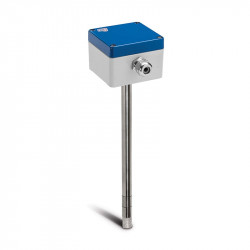
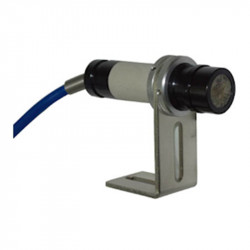
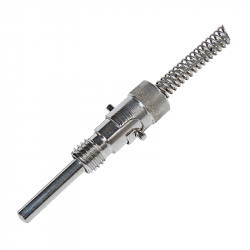
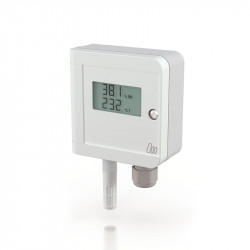
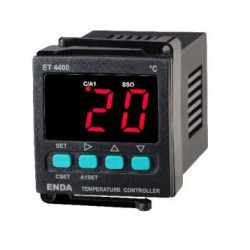
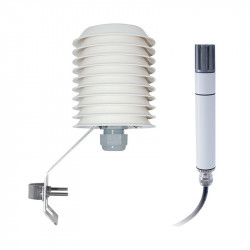
Hinterlassen Sie einen Kommentar